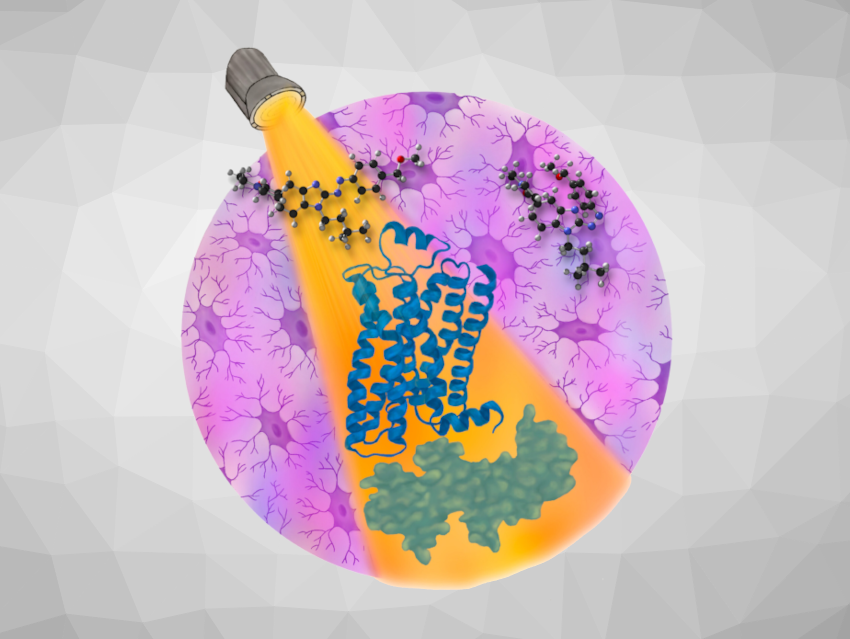In this issue, Leidy V. Hooker and Jeffrey S. Bandar discuss synthetic advantages of defluorinative C–F bond functionalization in a Review. Katherine A. Mirica et al. review fiber-integrated metal–organic frameworks as functional components in smart textiles. The Minireviews deal with target-specific biorthogonal reactions and their applications (Xiaogang Qu et al.), photocatalytic H2O2 production catalyzed by covalent organic frameworks (Zijun Yong and Tianyi Ma), as well as low-valent metals in metal–organic frameworks via post-synthetic modification (Ricardo A. Peralta et al.).
Donald Hilvert, Andreas Pfaltz, and Helma Wennemers look back on the life and accomplishments of Albert Eschenmoser, a giant of organic chemistry.
In the original research section, Michael Decker et al. use visible-light photoswitchable benzimidazole azo-arenes as β-arrestin2-biased selective cannabinoid 2 receptor antagonists (see picture). Gustavo Fernández et al. succeeded in sterically allowed H-type supramolecular polymerizations. Lukas J. Gooßen et al. describe the enantioselective synthesis of arylglycines via Pd-catalyzed couplings of Schöllkopf bis-lactim ethers with aryl chlorides. Shitao Wang et al. achieved a multicomponent synthesis of imidazole-linked fully conjugated 3D covalent organic framework for efficient electrochemical hydrogen peroxide production.
- Angewandte Chemie 49/2023: Frameworks,
Angew. Chem. Int. Ed. 2023, 62 (49).
Sponsored content is not written by and does not necessarily reflect the views of ChemistryViews’s editorial staff.



